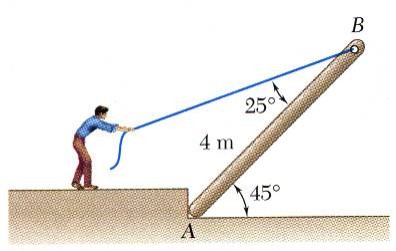|
|
|
||||||||||||||||||||||||||||||||||||||||||||||||
ME 101: Engineering
Mechanics
|
|||||||||||||||||||||||||||||||||||||||||||||||||
|
Basic principles: Equivalent force system; Equations of equilibrium; Free body diagram; Reaction; Static indeterminacy. Structures: Difference between trusses, frames and beams, Assumptions followed in the analysis of structures; 2D truss; Method of joints; Method of section; Frame; Simple beam; types of loading and supports; Shear Force and bending Moment diagram in beams; Relation among load, shear force and bending moment. Friction: Dry friction; Description and applications of friction in wedges, thrust bearing (disk friction), belt, screw, journal bearing (Axle friction); Rolling resistance. Virtual work and Energy method: Virtual Displacement; Principle of virtual work; Applications of virtual workprinciple to machines; Mechanical efficiency; Work of a force/couple (springs etc.); Potential energy and equilibrium; stability. Center of Gravity and Moment of Inertia: First and second moment of area; Radius of gyration; Parallel axis theorem; Product of inertia, Rotation of axes and principal moment of inertia; Moment of inertia of simple and composite bodies. Mass moment of inertia. Kinematics of Particles: Rectilinear motion; Curvilinear motion; Use of Cartesian, polar and spherical coordinate system; Relative and cons trained motion; Space curvilinear motion. Kinetics of Particles: Force, mass and acceleration; Work and energy; Impulse and momentum; Impact problems; System of particles. Kinematics and Kinetics of Rigid Bodies: Translation; Fixed axis rotational; General plane motion; Coriolis acceleration; Work-energy; Power; Potential energy; Impulse-momentum and associated conservation principles; Euler equations of motion and its application.
|
|||||||||||||||||||||||||||||||||||||||||||||||||
| Feedback form | |||||||||||||||||||||||||||||||||||||||||||||||||
